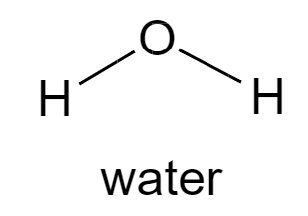
Here,${{H}_{2}}O$ is a planar and polar molecule. Is it true?
Answer
508.2k+ views
Hint: Before solving this question, we should know about Bent’s rule. It is the rule in which a central atom is bonded to many groups that will get hybridized and direct the orbitals that have more s character to the electropositive groups while the ones who have more p character will direct the orbitals to the electronegative groups.
Complete answer:
Usually, the elements of p-block are hybridized as$s{{p}^{n}}$(n= 1,2 or 3). Also, The hybrid orbitals are taken to be the same (n+1$s{{p}^{n}}$ orbitals contain the same p character). The result from this method is generally good but there is a chance of improvement with isovalent hybridization. In this method, the hybridized orbitals may not contain any integer or do not have an equal p character.
The assumption that all hybrid orbitals are equivalent can be removed, better understanding and outcomes and properties like molecular geometry and bond strength can be explained and obtained more accurately.

The hybridization of the water molecule is $s{{p}^{3}}$ and In this hybridized orbital, every orbital consist of 25% s-character and 75% p-character but in the case of ${{H}_{2}}O$, there are two lone pairs and two bond pairs so s character in this will be more.
Both the bond pair lie in the plane which makes it planar and the lone pair makes it polar.
Yes, it is true- ${{H}_{2}}O$ is a planar and polar molecule.
Note:
When we talk about the chemical structure of any molecule, it is associated with its properties and reactivity. VBT, which is the valence bond theory, says that the molecular structure forms because of the covalent bonding between the atoms and there are two overlapping and hybridized atomic orbitals in each bond.
Complete answer:
Usually, the elements of p-block are hybridized as$s{{p}^{n}}$(n= 1,2 or 3). Also, The hybrid orbitals are taken to be the same (n+1$s{{p}^{n}}$ orbitals contain the same p character). The result from this method is generally good but there is a chance of improvement with isovalent hybridization. In this method, the hybridized orbitals may not contain any integer or do not have an equal p character.
The assumption that all hybrid orbitals are equivalent can be removed, better understanding and outcomes and properties like molecular geometry and bond strength can be explained and obtained more accurately.

The hybridization of the water molecule is $s{{p}^{3}}$ and In this hybridized orbital, every orbital consist of 25% s-character and 75% p-character but in the case of ${{H}_{2}}O$, there are two lone pairs and two bond pairs so s character in this will be more.
Both the bond pair lie in the plane which makes it planar and the lone pair makes it polar.
Yes, it is true- ${{H}_{2}}O$ is a planar and polar molecule.
Note:
When we talk about the chemical structure of any molecule, it is associated with its properties and reactivity. VBT, which is the valence bond theory, says that the molecular structure forms because of the covalent bonding between the atoms and there are two overlapping and hybridized atomic orbitals in each bond.
Recently Updated Pages
Master Class 11 Business Studies: Engaging Questions & Answers for Success

Master Class 11 English: Engaging Questions & Answers for Success

Master Class 11 Computer Science: Engaging Questions & Answers for Success

Master Class 11 Social Science: Engaging Questions & Answers for Success

Master Class 11 Maths: Engaging Questions & Answers for Success

Master Class 11 Biology: Engaging Questions & Answers for Success

Trending doubts
One Metric ton is equal to kg A 10000 B 1000 C 100 class 11 physics CBSE

Explain zero factorial class 11 maths CBSE

An example of chemosynthetic bacteria is A E coli B class 11 biology CBSE

State the laws of reflection of light

What is 1s 2s 2p 3s 3p class 11 chemistry CBSE

Which one of the following is not a method of soil class 11 biology CBSE




